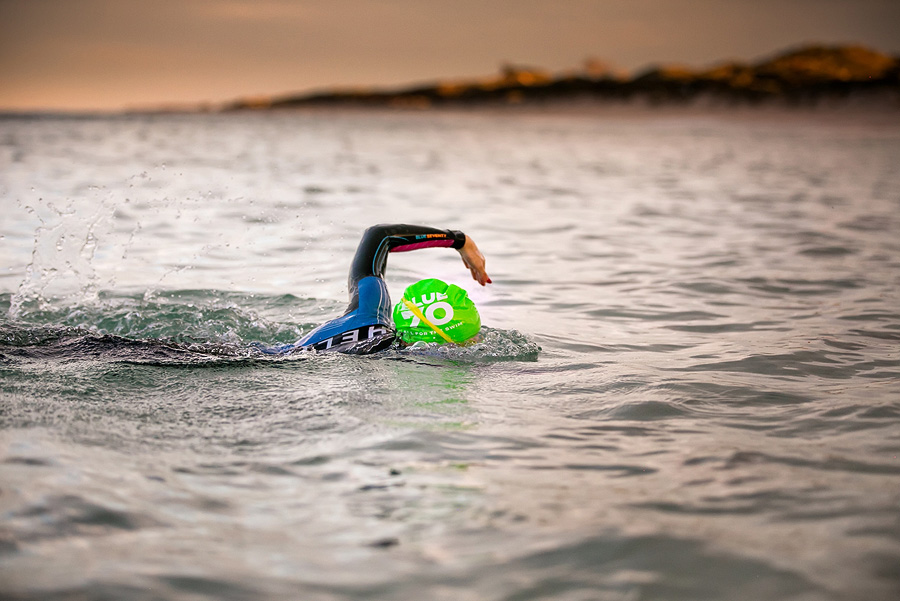5 Tips To Improve Your Open Water Swimming

As a new triathlete, spending a lot of time in the pool can be hugely beneficial when learning to swim freestyle (also known as the front crawl). While there are other strokes in swimming, freestyle is the fastest and therefore the one used during triathlon. There are no rules against swimming other strokes, but by swimming breaststroke, you could accidentally kick another athlete. And while this is a highly competitive sport, it is not a contact one.
After you’ve begun to feel comfortable swimming in a pool, it’s important that you practice your skills in the open water. Be sure you have built up some endurance and don’t head out to the open water with the intention to swim for hours. Stop before you are exhausted!
The open water can be very daunting to new swimmers. In fact, it’s sometimes daunting to those who have been swimming their entire lives. Fear of marine life or rough currents can damper training and the goal of completing a triathlon.
The best way to overcome this fear, as with any fear, is to face it. The pool, while convenient and safe is not the most effective way to prepare for your first triathlon. Yes, the open water can be dangerous, but there are ways to mitigate the danger and learn to enjoy open water.
5 Tips To Improve Your Open Water Swimming
- Your local pool typically has a lifeguard on duty, sometimes the open water does not. In this case, it’s best to swim with a group of friends and potentially have someone on shore or nearby as a lookout. In addition, the use of a buoy that straps around your waist can alert any nearby people or small craft that you may come across.
- The pool is great in that there are no currents. Learning to swim against and with a current will improve the chances of a successful race. To help with currents and potentially waves, work on sighting. Sighting is when you lift your head every few strokes to ensure you are still going in the correct direction. It’s best to keep an eye on the nearest race buoy or a point of reference.
- While most often swimming in the pool requires one style of freestyle stroke, the open water can sometimes mean a change to the freestyle stroke that will prove more effective. For example, in choppy water, doing shorter, more shallow strokes can help you stay closer to the surface of the water, thus preventing you from getting tossed with the waves. The other way to practice freestyle to prepare for choppy water is to make sure to breathe bilaterally. This will prevent you from swallowing water since you can simply breathe to the opposite side of the bigger swells.
- Practice practice practice! As with most sports, the only way to really practice before the big day is to simulate the race day experience as closely as possible. That means getting out in the same type of open water you will experience at the race as often as you can. In addition, try to find other triathletes who can swim close to you so that you are prepared to swim around others.
- Try to find tools that can help you relax. One such way is to count your strokes. While the numbers may be meaningless, having something to focus on can quiet your mind. Slow your breathing and enjoy the open water.
Triathlon is not for the faint of heart. It takes a lot of courage to swim, bike, and run your way to a finish line. But by following these tips and swimming with either a coach or seasoned triathletes you can do it!

Beth Shaw is a triathlon and swim coach who has completed numerous marathons, triathlons, and everything in between. Beth has been coaching since 2015 and has been a contributing writer to Active.com and Women's Running. You can follow her on Instagram at @iheartfinishlines








